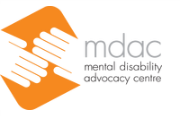8(I). Involvement of patients and families
In places where there is relatively limited visiting from families and others, and where healthcare decisions are made by clinicians alone (and in many large institutions doctors alone), there is an obvious potential for higher levels of coercive measures in terms of both intensity and time. This is particularly the case where such practices are part of the history and culture of the institution.93 From the findings of the monitoring, this is undoubtedly the case in many psychiatric institutions in the Czech Republic.
The simple step of inviting families to be as fully involved as possible in their relative’s care in hospital bears no cost implications and should automatically lead to a more person-centred and holistic approach. At the hospital level, a ‘patients and carers group’ could be established to work with senior clinicians and mangers. Giving those directly affected a voice in the organisation of services is also vital as governments make progress on the process of deinstitutionalisation, as required by international law.94
93 A. Fiorilloa a kol., ‘How to improve clinical practice on involuntary hospital admissions of psychiatric patiens: Suggestions from the EUNOMIA study’, (Journal of the Association of European Psychiatrists, květen 2011, 26(4), str. 201-7).
94 See Article 4(3) of the CRPD, which reads: “In the development and implementation of legislation and policies to implement the present Convention, and in other decision- making processes concerning issues relating to persons with disabilities, States Parties shall closely consult with and actively involve persons with disabilities, including children with disabilities, through their representative organizations.”

